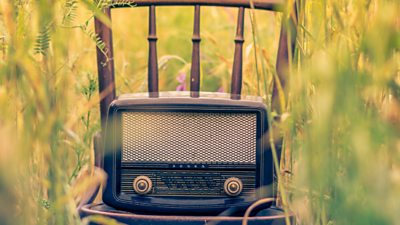
There are various studies investigating the energy footprint of digital technology and services, including streaming, broadcast television, telecommunications and consumer electronic devices. However, there are currently no complete studies estimating the electricity consumption of radio broadcast and listening. This paper presents our approach to modelling the energy required to prepare, distribute and consume ����ý radio services, exploring both the current usage and how this may change over 20 years under a variety of scenarios. Our methodology applies the principles of lifecycle assessment to evaluate the energy intensity of each radio delivery platform and highlight key ‘hotspots’ within the end-to-end radio chain.
We show the total mean energy consumption for our 2018 baseline to be 325 GWh, equivalent to 0.1% of UK electricity use. Per device-hour, we determine DAB to be the least energy-intensive platform (9.3 Wh/device-hour) and DTV radio services to be the most (80.6 Wh/device-hour). Of all future scenarios modelled, we estimate that switching off AM, FM and DTV radio services, and retaining DAB and IP, leads to the largest energy saving – almost twice as much as moving to IP-only distribution.
We show consumer devices to be the dominant driver of energy use, comprising 73.4%-81.0% of the total energy across our baseline and scenario results. We identify smart speaker and radio set standby power to be the key parameters impacting energy. As a result, we simulate the removal of smart speaker and radio set standby power from 2021 in our model which leads to a mean energy reduction of 38.3% across scenarios. This demonstrates the value of reducing standby power through regulation, manufacturers and audience education. Moreover, we highlight the importance of sustainable decision-making when choosing devices to access radio.
Photo by on
White Paper copyright
© ����ý. All rights reserved. Except as provided below, no part of a White Paper may be reproduced in any material form (including photocopying or storing it in any medium by electronic means) without the prior written permission of ����ý Research except in accordance with the provisions of the (UK) Copyright, Designs and Patents Act 1988.
The ����ý grants permission to individuals and organisations to make copies of any White Paper as a complete document (including the copyright notice) for their own internal use. No copies may be published, distributed or made available to third parties whether by paper, electronic or other means without the ����ý's prior written permission.

